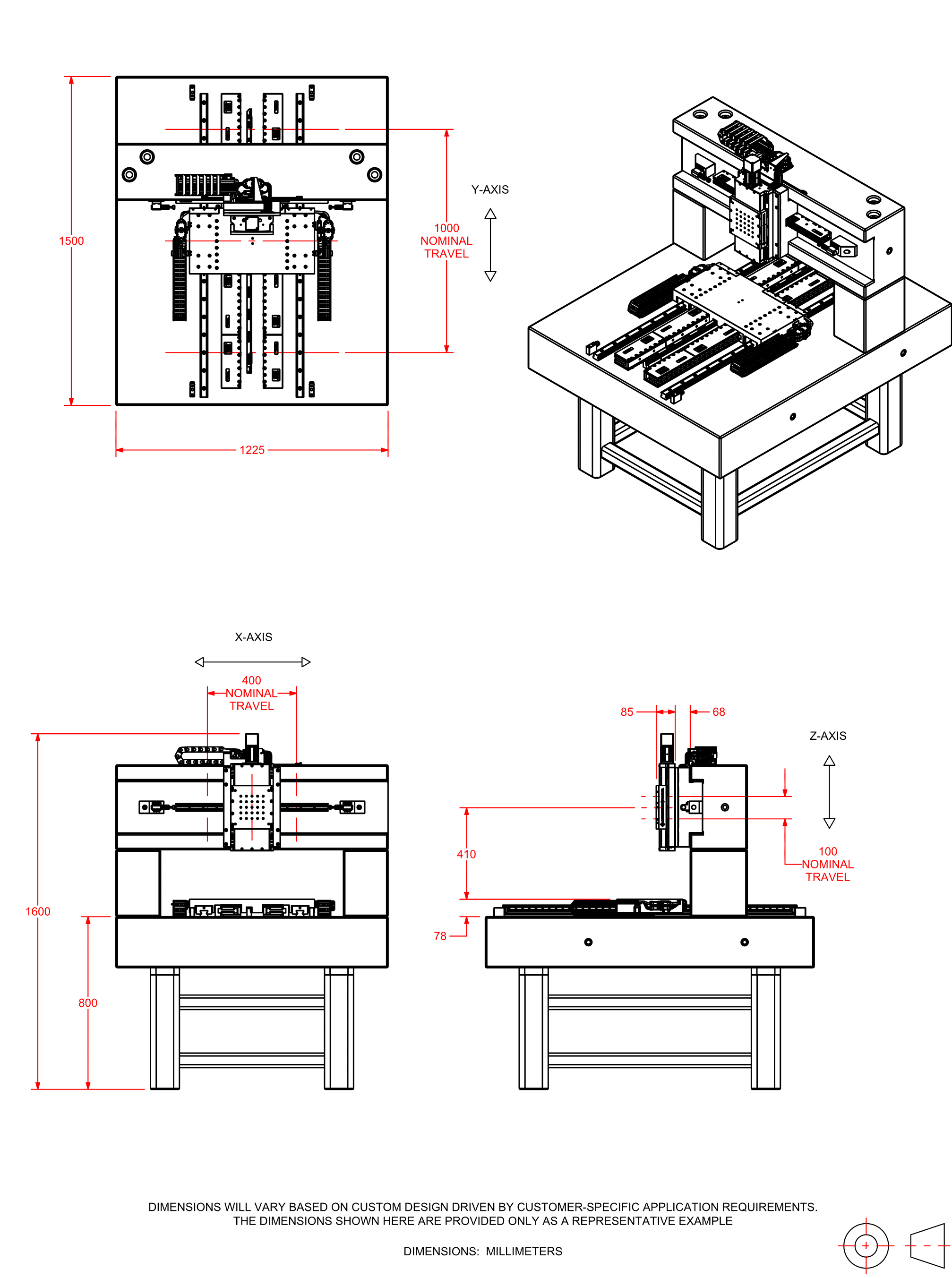Air/Mechanical Bearing IGM System
Hybrid (Air/Mechanical) Integrated Granite and Motion (IGM) systems offer design flexibility while maximizing performance and minimizing cost. Some applications require air-bearing precision on only certain axes of motion. By using a hybrid design, those critical axes can be addressed with air-bearing technology while less critical axes are addressed using mechanical bearing technology.
Description
Specifications
Dimensions
Downloads
Description
Description
Specifications
Dimensions
Downloads
Description
Design Features
- Custom-engineered multi-axis motion platform integrates linear motion components directly into a granite structure
- Combination of air- and mechanical-bearing axes helps optimize performance and cost
- Air-bearing bridge axis is optimized for high-accuracy scanning motion, while mechanical-bearing lower axis is optimized for indexing a large payload
- Design is scalable based on application requirements for travel length, payload and dynamic performance
Sometimes an application requires air-bearing precision only on one axis of motion. Hybrid-bearing IGM systems, such as the example depicted here, are well-suited to this case because they provide the flexibility to utilize air-bearing technology on an axis of critical precision and also maximize cost efficiencies by using mechanical bearings on less sensitive axes.
Because they are specifically engineered to meet a customer’s application requirements, IGM motion systems represent the pinnacle of design flexibility. From drive and bearing type selection to system layout and arrangement, IGM systems are available with a wide variety of value-adding accessories and state-of-the-art control electronics. Aerotech’s motion engineers regularly custom-tailor IGM systems to meet unique technical and commercial application requirements.
The integrated nature of an IGM system results in unique technical benefits. The granite structure is able to offer increased stiffness over traditional stages in certain situations, contributing to improved dynamic performance. Further, the simplified structural design serves to reduce the axis profile and minimize design offsets, resulting in a reduction in Abbe errors and therefore more accurate motion at the desired workpoint.
See our case study for a comparison of an IGM system versus a traditional stage-on-granite system.


